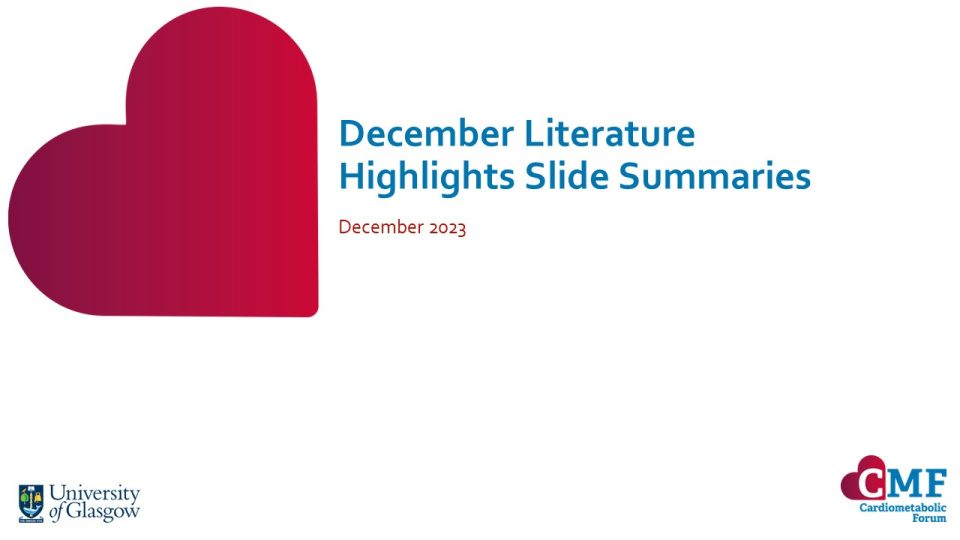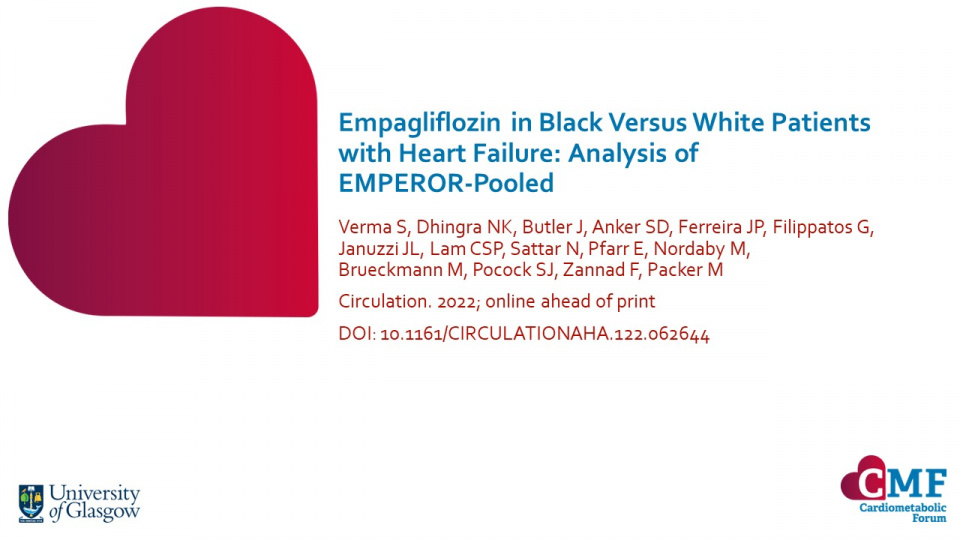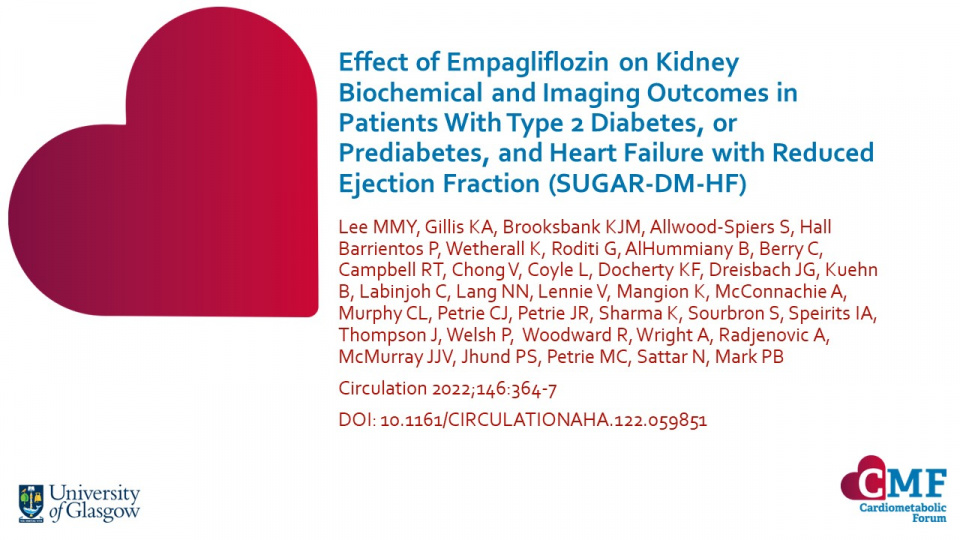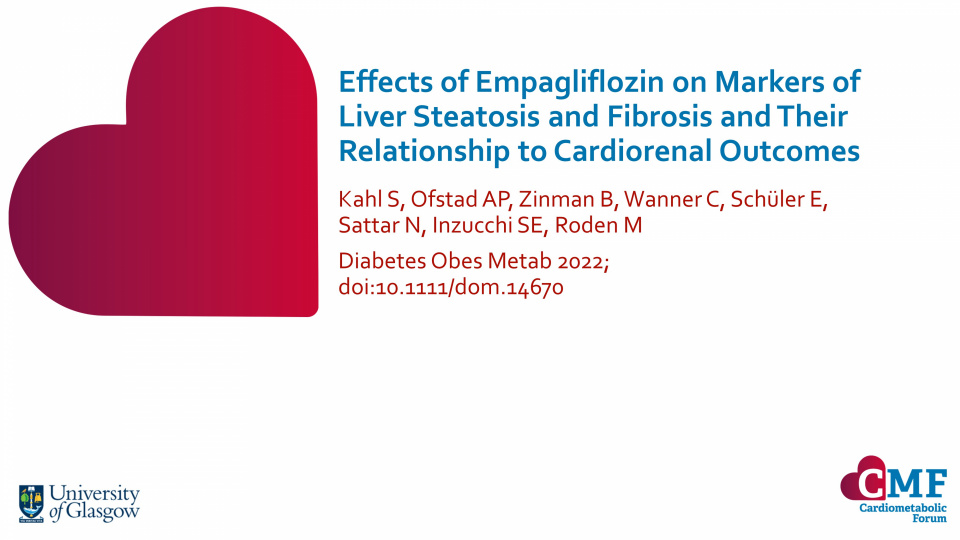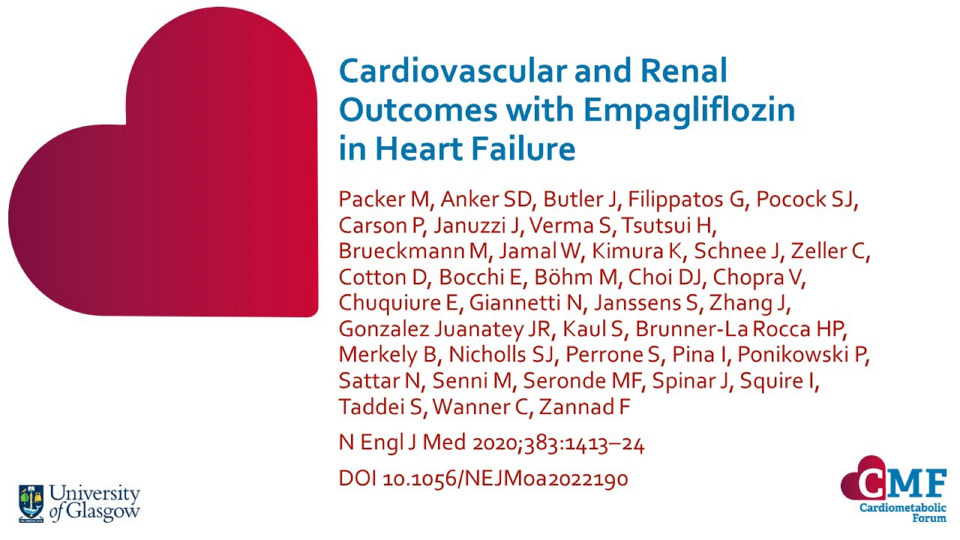Publications
Stay up to date with our literature reviews which are curated by experts to feature the most important publications released each month. Explore our publications for access to concise summary slides for your own use.
Empagliflozin in Black Versus White Patients with Heart Failure: Analysis of EMPEROR-Pooled
Circulation. 2022; online ahead of print DOI: 10.1161/CIRCULATIONAHA.122.062644
While analyses from DAPA-HF and EMPEROR-Reduced demonstrated a consistent benefit of SGLT2i in Black patients, data were limited to HFrEF and included a small number of Black patients. In the current analysis, the efficacy and safety of empagliflozin according to Black vs White race in the Americas was assessed across the spectrum of EF in EMPEROR-Pooled, a combined dataset from both EMPEROR trials.
Keywords:
Iron Deficiency in Heart Failure and Effect of Dapagliflozin: Findings From DAPA-HF
Circulation 2022; online ahead of print DOI: 10.1161/CIRCULATIONAHA.122.060511
In this post hoc analysis of DAPA-HF, 43.7% of participants had iron deficiency at baseline, which was associated with worse outcomes. Dapagliflozin appeared to increase iron use but improved outcomes, irrespective of iron status at baseline.
Effect of Empagliflozin on Kidney Biochemical and Imaging Outcomes in Patients With Type 2 Diabetes, or Prediabetes, and Heart Failure with Reduced Ejection Fraction (SUGAR-DM-HF)
Circulation 2022;146:364-7 DOI: 10.1161/CIRCULATIONAHA.122.059851
This study found that a reduction in kidney perfusion and congestion may be mechanisms by which sodium-glucose cotransporter-2 inhibitors (SGLT2i) affect kidney function in people with heart failure with reduced ejection fraction (HFrEF). The authors believe this is the first kidney MRI trial using SGLT2i in this patient group.
Prognostic Implications of N-terminal Pro-B Type Natriuretic Peptide and High-Sensitivity Cardiac Troponin T in EMPEROR-Preserved
JACC Heart Fail 2022 doi:S2213-1779(22)00302-X
This planned analysis from EMPEROR-Preserved provides strong evidence for both N-terminal pro-B type natriuretic peptide (NT-proBNP) and high-sensitivity cardiac troponin T (hs-cTnT) as important disease markers and prognostic indicators in people with heart failure with preserved ejection fraction (HFpEF).
Evaluation and management of individuals with HFpEF can be challenging. NT-proBNP and hs-cTnT are biomarkers with well-established prognostic role across the range of ejection fraction in heart failure. As such, it is possible that patient baseline values could be used to identify those suitable for treatment. However, ambiguity has led to confusion about pharmacologic management, and the role of biomarkers.
Effects of Empagliflozin on Markers of Liver Steatosis and Fibrosis and Their Relationship to Cardiorenal Outcomes
Diabetes Obes Metab 2022; doi:10.1111/dom.14670
In this study of adults with T2D and established CV disease, the proportion of patients at high steatosis risk decreased slightly in patients treated with empagliflozin compared with patients treated with placebo. Fibrosis risk was not reduced.
Empagliflozin in the Treatment of Heart Failure With Reduced Ejection Fraction in Addition to Background Therapies and Therapeutic Combinations (EMPEROR-Reduced): A Post-hoc Analysis of a Randomised, Double-blind Trial
Lancet Diabetes Endocrinol 2022;10:35–45 doi.org/10.1016/S2213-8587(21)00292-8
The data from the trial suggests that empagliflozin may be considered as a foundational therapy in heart failure with reduced ejection fraction. This post-hoc analysis of EMPEROR-Reduced – a randomised, double-blind, parallel-group trial – by Verma et al. evaluated the efficacy and safety of empagliflozin in patients with heart failure with reduced ejection fraction and to baseline treatment.
Cardiovascular and Renal Outcomes with Empagliflozin in Heart Failure
N Engl J Med 2020;383:1413–24 DOI 10.1056/NEJMoa2022190
Empagliflozin demonstrated a reduction in CV death, HF hospitalisation, rate of eGFR decline and risk of serious renal outcomes in patients with chronic HF and reduced ejection fraction in the EMPEROR-reduced study.

